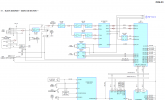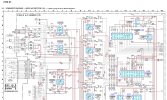In fact member sm5 (no longer active) posted some Merging Anubis tests. Anubis also advertised a similar ADC technology.

 www.audiosciencereview.com
The quote box in my post contains the original text content, but unfortunately the graphs are gone, and sm5 modified and removed all the the posted reports. You can see my reply has a comment about the Anubis too.
www.audiosciencereview.com
The quote box in my post contains the original text content, but unfortunately the graphs are gone, and sm5 modified and removed all the the posted reports. You can see my reply has a comment about the Anubis too.
The quote box in this post also includes another (removed) comment of the Anubis from sm5:

 www.audiosciencereview.com
www.audiosciencereview.com
Why? I can't be sure, but two things. Firstly, member jerryfreak later posted some results of other ADCs which wiped the floor of the Anubis.

 www.audiosciencereview.com
www.audiosciencereview.com
Secondly, Cosmos ADC also showed up later on which also wiped the floor of the Anubis. I suspect leaving the test results of the Anubis here can potentially hurt the selling price in 2nd hand market, as a precaution, the reports are removed.
That said, from what I have seen in the Anubis reports, the results are indeed much better than Zoom F6, yet still far away from Cosmos ADC and some of the products that jerryfreak posted.

RMAA Tests: (Welcome to add others!)
RMAA tests: you're welcome to post in this thread as more info on recording interfaces would be nice to know - or better yet: send it in to be tested also to see if there's any difference!
 www.audiosciencereview.com
www.audiosciencereview.com
The quote box in this post also includes another (removed) comment of the Anubis from sm5:

RMAA Tests: (Welcome to add others!)
RMAA tests: you're welcome to post in this thread as more info on recording interfaces would be nice to know - or better yet: send it in to be tested also to see if there's any difference!
 www.audiosciencereview.com
www.audiosciencereview.com
Why? I can't be sure, but two things. Firstly, member jerryfreak later posted some results of other ADCs which wiped the floor of the Anubis.

RMAA Tests: (Welcome to add others!)
You need levels to remain the same for all devices to be able to compare. i did a bunch of these today, feeding from my rme adi2 pro fs and topping D70 at high (+24 dBU), mid (-2 dBU) and low levels (-14 dBU), to get a sense of preamp quality on those that have gain stages. a few were loopbacks...
 www.audiosciencereview.com
www.audiosciencereview.com
Secondly, Cosmos ADC also showed up later on which also wiped the floor of the Anubis. I suspect leaving the test results of the Anubis here can potentially hurt the selling price in 2nd hand market, as a precaution, the reports are removed.
That said, from what I have seen in the Anubis reports, the results are indeed much better than Zoom F6, yet still far away from Cosmos ADC and some of the products that jerryfreak posted.

